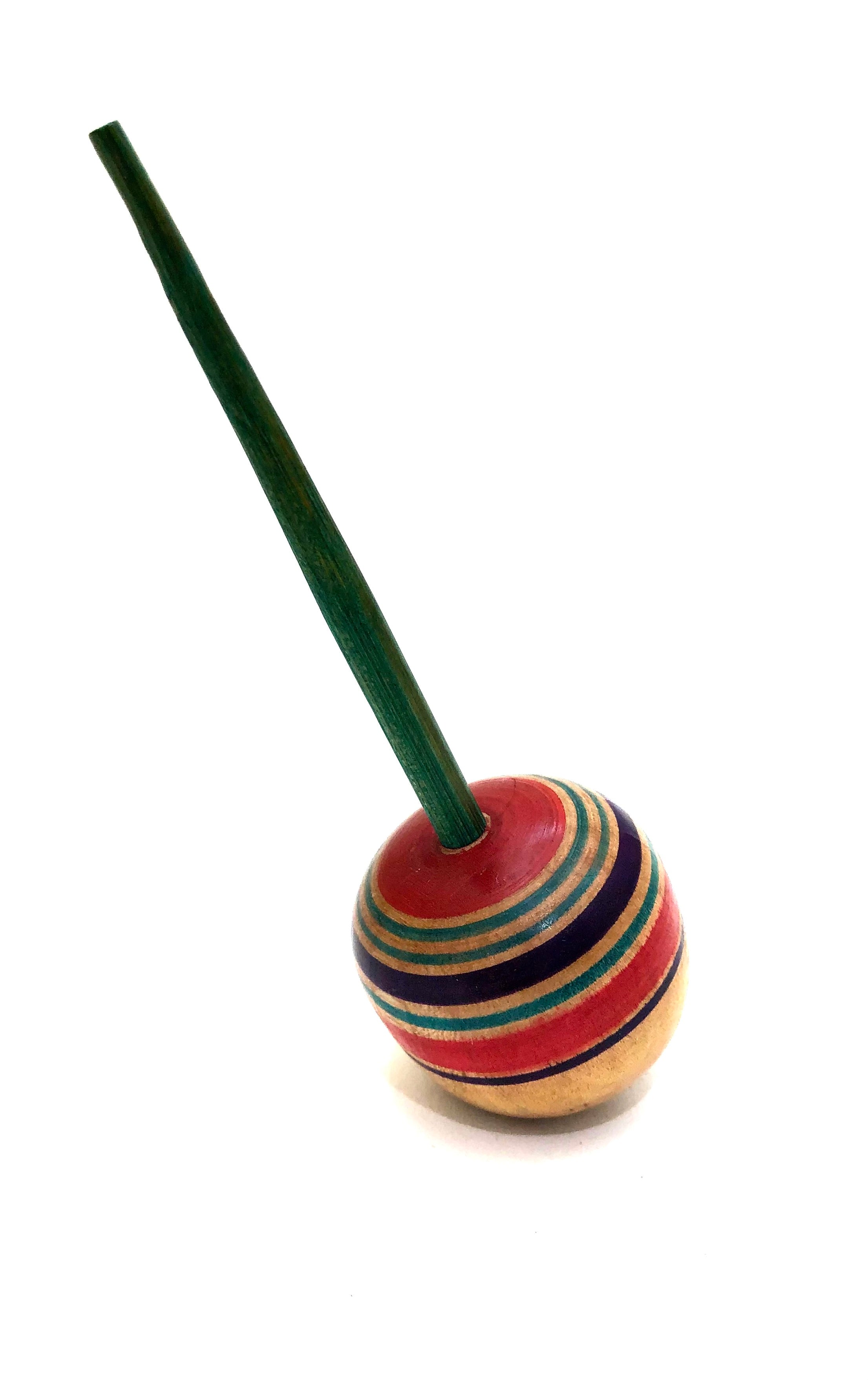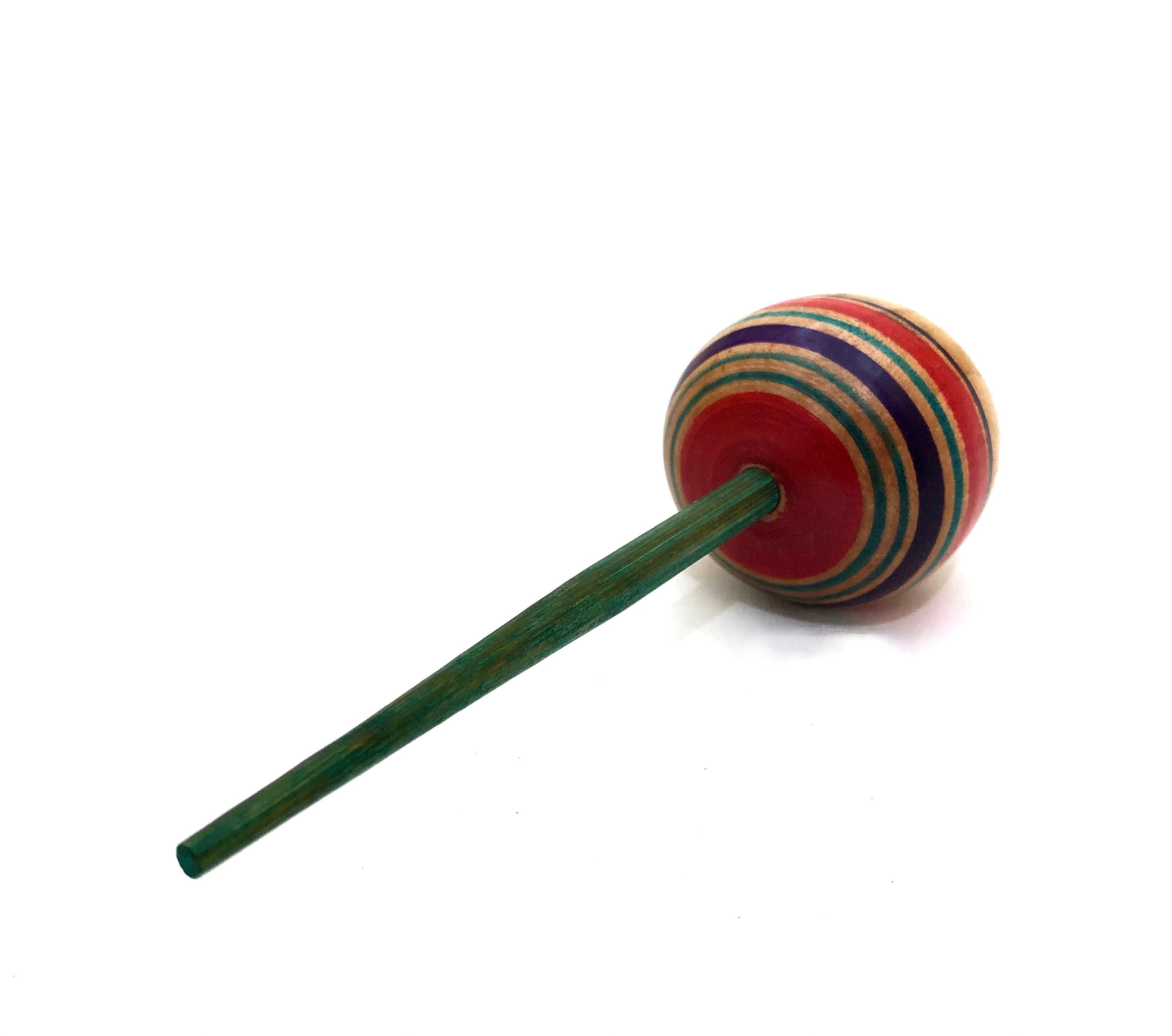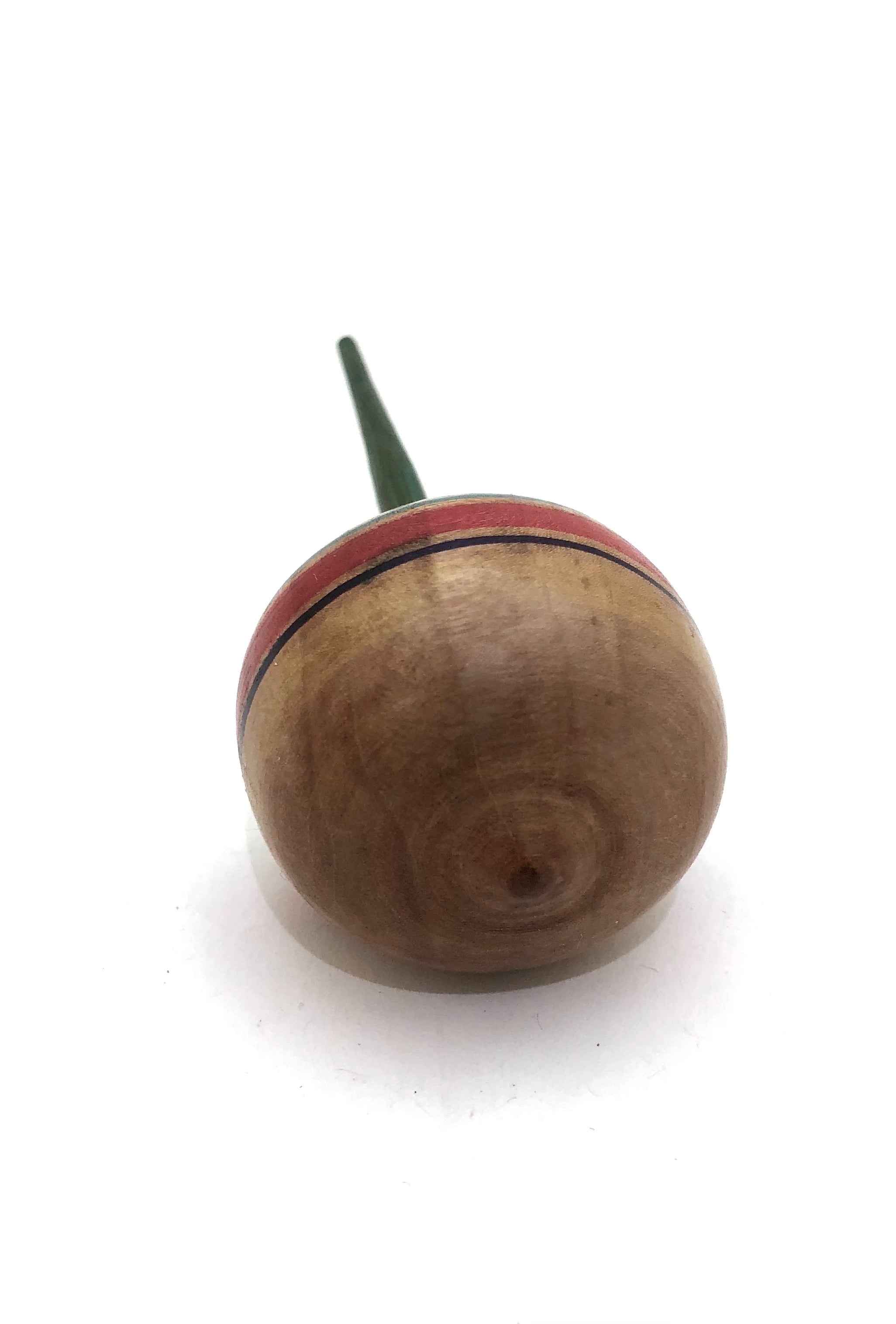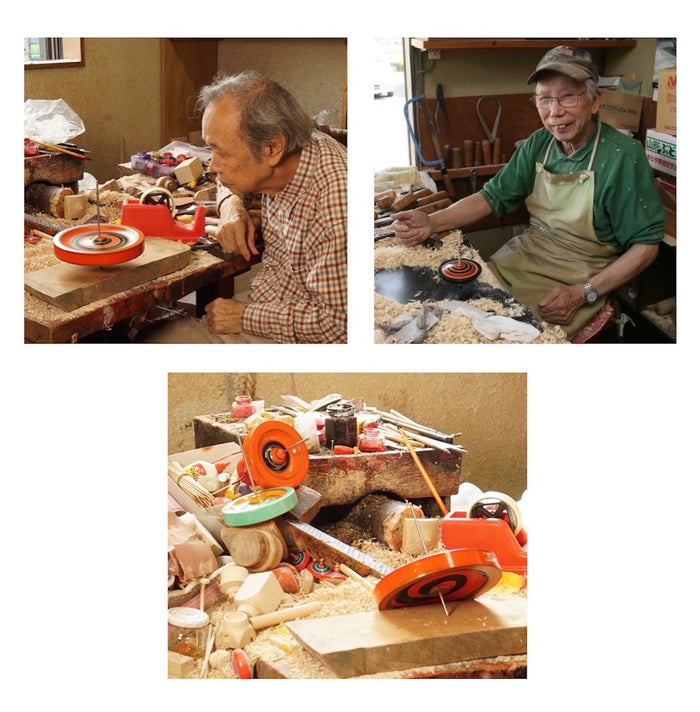


Vintage Japanese Tougatta Hand Twist Koma Spinning Top by Hironi, Masaaki (1935-)
Dimension: 5-1/2"l x 2-0"dia.
The top being offered is a famous type by a toy craftsman known as Hironi. Tops have long been prized as symbols of good luck. Because of their spinning motion, they symbolize “money circulating”, “being quick-witted” or “successful work among the business community”. This top is decorated with multi-width lines in colors of red, purple, and green, (Red symbolizes health. Black is for strength. Yellow is for wealth. The remaining portion of the top is left with natural wood with Green is for good harvest. And purple is for nobility) on the crown and circulating the body of the top. The piece has a long element that aids the hand to support fast turning. The remaining portions of the top are made of natural wood with a point/tip in the center to assist spinning.
A spinning top is remarkable because it tends to defy gravity while it is spinning. If spun fast enough, a spinning top will rise to a vertical position and happily stay there, even though it will fall over if it stops spinning. Spinning tops also gave rise to a form of entertainment known as kyoku-goma. These virtuoso top-spinning performances never fail to delight audiences.
See our e-book entitled: A Collector’s Guide: Traditional and Creative Kokeshi and Toys: https://mingeiarts.com/collections/our-books/products/a-collectors-guide-traditional-and-creative-kokeshi-and-toys
Condition: Excellent meaning that the piece retains its original craft/workmanship and functions as intended, showing a wonderful-developed patina and is void of damage, cracks, breakage, or repairs and meets all the standards of the collectible Vintage Traditional Kokeshi Toys.

Artisan
Interactive Toymaker: Hiroi, Masaaki
1935-2019
Origin:
Masaaki-san is a fourth-generation suburban Tokyo resident, and maker of hand-crafted children’s toys, which he created with traditional Edo and wind-up techniques, (1603-1867) when studying under Master Hiori Kenjiro. Admired throughout Japan and around the world, his creations have been exhibited and acquired for the permanent collection of the Louvre. Hiroi died in 2019 and has been named an honorary citizen of Seattle, Washington.
Collector's note – descriptive qualities, standard characteristics & ornamentation styles:
The majority of his toys are automatonical figures. Many are inspired by the everyday life of citizens and folk stories. All are brightly painted and fashioned from wood. He is famous for his spinning tops of all sizes; all beautifully functioning as conceived.
Artist's comments: The Tops in People's Hearts
"I am sad to see so many old toys become obsolete around the world. I want to make people who buy my toys laugh, and make toys that anyone, old and young, men and women can enjoy”. I don’t create just traditional forms [of tops] but also come up with new technical forms. I haven’t counted them, but I’ve probably invented around 4,000 or 5,000 types.
One day, my father gave me a foot-powered lathe so I could make tops and other things to play with. I liked working with my hands, so every day I worked on the lathe. My older brother and I made tops and kendama (cup and ball toys) and sold them on the Sendai black market. It was a time when there were no toys, so they sold quite well.
I became facinated earlier in my career with automatons, which come to life as they spin. There are no diagrams for top-automation making. When I come up with an idea for an automaton, I don’t ever give up until it’s been realized. There’s one top, “Momotarō” (Momotarō the Peach Boy)—when you pull the string and make it spin, the peach part is supposed to pop open so you can see the little boy— but the peach’s mechanism doesn’t open properly. I thought about it for days on end. I made an adjustment to the placement of the elastic, and when the peach popped open smoothly a bell went off somewhere. It was in 1965 that I decided to take these larger automaton figure overseas rather than just selling in Japan. Twenty seven years ago, I took about 70 of my works to the Musée des Arts Décoratifs in Paris. The curator at that time said, “I’ll only collect items that you designed yourself” and not toys designed by you and created by your apprentices. I gave a dubious expression saying: there is value in contemporary artists creating new art. That I am able to proudly say today that I am producing tops that are my own work is because of his words to me.
For complicated mechanisms, sometimes it can take as many as 10 days to produce them. Even though I’ve been on this path for 60 years, that’s nothing to boast about. If one cannot do their craft skillfully, there is nothing but failure. The idea that tomorrow I will be able to make even better tops than I did today—that is what has kept me going for such a long time". HM

Explore & Learn More about Interactive Toymaker: Hiroi, Masaaki
